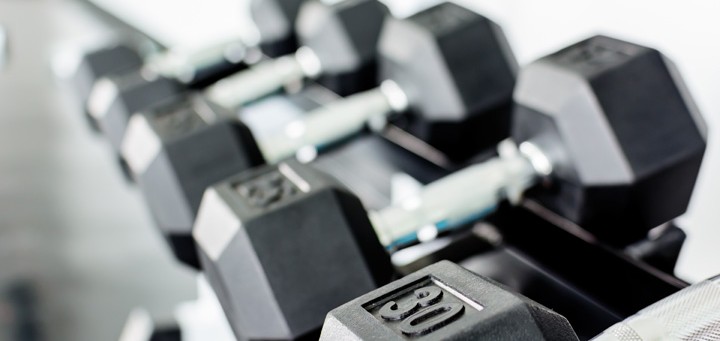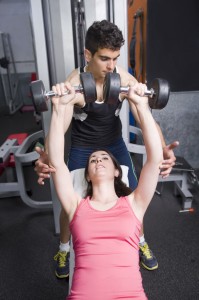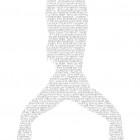
Trending
Weight training, how to: The skinny on heavy lifting - MAX-LOAD TRAINING
December, 2015
Feeling strong feels terrific. And that’s one of the reasons women and men all ages are adding strength training to their workouts. With benefits such as increased bone density, muscle retention and lower body fat, it’s no surprise. And now that most gyms have trainers to help you plan a safe program, it doesn’t even have to be intimidating. For this article, we focused on a workout called max-load training. Here’s what you need to know.
Max-Load 101
Max-load training involves performing a maximum of 8 to 12 repetitions of whatever weight of load you are using.
Everyone’s max-weight will differ, but you will know you have the right load for you if it allows you to perform 8 to 12 reps, maximum, to muscle failure.
If you’re able to do more reps, the weight’s too light. If you can’t get to 8, the weight’s too heavy.
Max-load strength training includes five types of movements: pull, push, hip-hinge, leg-press and core stabilization.

Pull Movement
What it is: A pull movement would be defined as pulling a weight towards yourself (a dumbbell row) or pulling your body weight towards an object (a pull-up).
Muscles targeted: Upper-body pull exercises typically target back muscles: the lats (the broad diagonally sweeping muscles on either side of your back), the rhomboids (the muscles used to pull your shoulder blades together) and the biceps. There are also pull movements that target the hamstrings (such as hamstring curls).
Typical pull exercises: Typical pull movements would be any variation of a dumbbell row (seated, standing or bent over), tricep pull-downs, lat pull-downs, hamstring curls or any drill that involves running forwards or backwards while dragging a weight.
Pull exercises should be followed by: If you are working with a program that calls for push/pull movements to be alternated, follow your pull exercise with a push movement (described below). Generally, however, pull movements can be executed at any point during a workout, depending on your goals.
Push Movement
What it is: A push movement is the opposite of a pull movement and would be defined as pushing a weight away from your body (a bench press) or pushing yourself away from the ground (a push-up). The push is probably one of the most familiar movements that people execute in the gym and in daily life.
Muscles targeted: The muscles typically targeted in upper-body push movements would include your shoulder muscles, triceps (back of the arms), and the anterior chain (chest muscles). Push movements can also include the posterior chain (glutes, biceps and deltoids), depending on the exercise.
Typical push exercises: Typical push exercises are pull-ups, bench presses, dumbbell chest presses, dumbbell shoulder presses, push-ups and tricep press-downs.
Push exercises should be followed by: If you are working with a program that calls for push/pull movements to be alternated, follow your push exercise with a pull movement that works the opposite muscle you just exercised. For example, follow a push movement (a bench press) with a pull movement (a bent-over dumbbell row).
Hip-Hinge Movement
What it is: Just like the name states, a hip-hinge movement involves bending your torso by hinging your hips. Basically bending over. And as you likely know from everyday life, incorrectly executing this movement can result in lower back pain.
Muscles targeted: Hip-hinge exercises work the entire body, but you will generally feel it in your glutes, hamstrings and back, as the exercises are generally targeted for posterior muscles. The key to executing any hip-hinge exercise properly is to bear the brunt of the weight on your hips, glutes and legs when in a bent-over position.
Typical hip-hinge exercises: Hip-hinge movements are emphasized in kettlebell deadlifts, Romanian deadlifts, Olympic lifts, swings and even in some upper-body rowing and scapular stabilization movements.
Hip-hinge exercises should be followed by: A hip hinge exercise doesn’t have an exact methodology of what should follow. It will depend on your goals. If gaining lower-body strength is the goal, you might focus on a hip-hinge exercise that mainly targets posterior muscles superset with an exercise that targets mainly anterior muscles (for example, a Romanian deadlift superset with leg press).
Leg-Press Movement
What it is: Leg-press exercises are great for strengthening and toning the quads, glutes and hamstrings. The most common of these is the seated leg press (performed on a leg-press apparatus). The squat (performed with weights) is also commonly lumped in with leg-press movements.
Muscles targeted: Leg-press exercises typically target the glutes, quads, hamstrings and core, as well as multiple joints. Many of the movements require balance, strength and flexibility.
Typical leg-press exercises: Typical leg-press exercises performed with free-weights are squats, bench step-ups, side lunges and reverse lunges.
Leg-press exercises should be followed by: Generally, leg-press movements can be executed at any point during a workout, depending on your goals.
Core Stabilization Movement
What it is: Core stabilization is challenged with virtually every movement you make, whether it is walking, twisting, squatting or anything really. To challenge your core specifically is a different story.
Muscles targeted: Contrary to some basic beliefs, the core is much more than just your abs. In fact, some major muscles included are the pelvic floor muscles, the transversus abdominis (they wrap your torso from front to back and from the ribs to the pelvis), the multifidus (very thin muscles on either side of the vertebrae), internal and external obliques and the rectus abdominis muscles (washboard abs). Minor core muscles include the lats, gluts and trapezius muscles. In laymen’s terms, this means your core includes your entire trunk.
Typical core stabilization exercises: Typical core stabilization movements are planks, back extensions, trunk rotations, squats and basically any movement that requires you to keep a tight core.
Core stabilization exercises should be followed by: Core stabilization is done all throughout the workout during all of your larger gross muscle movements. But when you are getting down to really focusing on that trunk strength and endurance, you should perform these exercises at the end of the workout. Tiring out your core before you perform a max-load squat is not the best way to plan a program. So save your abdominal exercises, small lower-back strengthening movements and oblique targeting for the end. t8n
With special thanks to Megan Lauer, Fitness Centre Supervisor at Servus Place.
Gym Tip
Always ask your trainer for their education, certifications and experience. You want someone who is certified and insured by trustworthy sources.
Weight image : © kitzcorner / Dollarphotoclub












